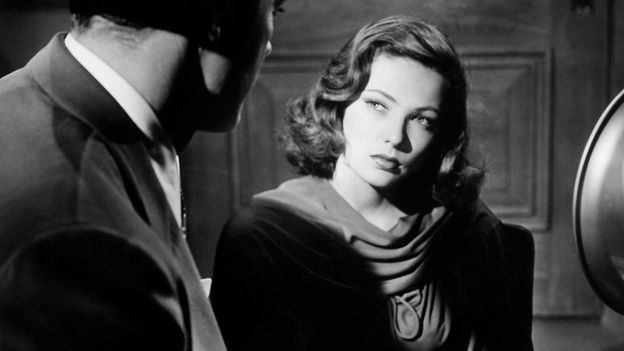As Elena Parker, the founder of Gene Tierney Online and her forthcoming biographer, tells the : “Gene expressed appreciation that she continued to be identified with Laura long after the conclusion of her career, rather than not being remembered at all. While the enduring power of Laura may not have necessarily furthered her acting legacy, it has bestowed on Gene longevity in beauty culture.”
The BFI season offers a corrective to the powerful narrative of Tierney’s beauty, or to her tragic personal life, which often has taken up more air than her films (she suffered from mental health struggles and an unlucky exposure to rubella during her first pregnancy, which would leave her daughter severely disabled). Cliches of “tragic beauty” or the “prettiness that helped destroy her” are an old morality play and nothing more. Tierney wrote in her 1979 memoir Self-Portrait of her appearance and her time in mental health facilities: “I have always needed to believe that my career survived on more than how I looked. I have no deeper meaning to plumb, no point to make about beauty and craziness. A friend once asked a doctor if he thought my life might have been easier, if I might not have needed confining, if I had been less pretty. ‘No,’ he said bluntly. ‘They have ugly people in there, too.'”
How beauty standards have shifted – or not
It may seem quaint to look all the way back to Tierney, one of the stars of the 1940s, as a signifier of female beauty. After all, we might be inclined to think that a great deal has changed since. Then, body diversity was not remotely of interest; in Tierney’s Hollywood, a woman’s shape should be slim and hourglass, with diets, corsets and S-shaped dresses to reinforce that.
Nor was comfort of interest: it was a time before baggy jeans, fluffy-brow trends, or athleisure. There was an extremely narrow ideal of attractive femininity – white, thin, coiffed, manicured, and with no visible freckles, fat, or racial difference (unless they were playing a role that should have gone to a person of colour to begin with, and usually did not). And so the all-male studio heads and their teeming departments of make-up artists saw to that, with putty to apply to crooked noses and careful diagrams of star faces which they sought to categorise by shape and then correct with cosmetics and hairstyle.
More like this:
As Cathy Lomax, an artist and Hollywood makeup expert with a PhD in star studies and cosmetics, writes in her thesis Making Up the Star: Makeup, Femininity, Race and Ageing in Hollywood, 1950–1970: “This eschewing of realism extended to the, all but identical, make-up worn by stars. Jean Porter, who was under contract at MGM in the 1940s observed, ‘Our mouths were all made up the same […] our eyebrows were very much the same, our makeup was an awful lot alike.'”
Since Tierney’s day, of course, some things have undeniably changed for the better in the industry: now there is greater body diversity, and growing resistance to fatphobia, racist typecasting and whitewashing. Sometimes we even see real, everyday teeth or skin texture onscreen – though usually in independent films like Paul Thomas Anderson’s Licorice Pizza (2021) or Bo Burnham’s Eighth Grade (2018), and still rarely enough for it to be notable.
But while Gene Tierney’s claim in Self-Portrait that she was hungry for 20 years in Hollywood because “a certain thinness would add attractive contours to my face”, may seem like the refuge of an old, bad past, it’s fair to say the current craze around weight-loss drug Ozempic still shows that the entertainment business has not come quite as far as we would all hope. And the aforementioned factory-line beautifying doesn’t sound too different from what New Yorker writer Jia Tolentino coined as “Instagram face”, the phenomena of cyborgian-similar features on the app due to a combination of filters and aesthetic treatments. The beauty standards themselves may have shifted slightly, but the rush to attain a certain Stepford Wife consistency has not.


